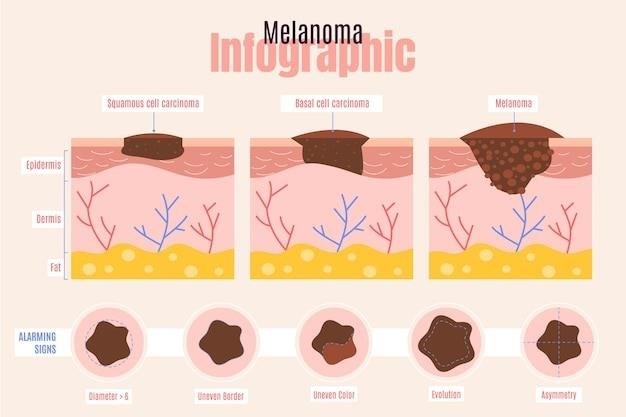myotomes and dermatomes pdf

Dermatomes and Myotomes⁚ An Overview
This document discusses dermatomes and myotomes‚ which relate to the sensory and motor innervation of the body by spinal nerve roots․ It provides detailed information on⁚ ⎯ The anatomy and distribution of dermatomes for each spinal nerve from C1 to S5․ — Clinical tests for dermatomes using pinprick and light touch at key points on ․․․
What are Dermatomes?
A dermatome is an area of skin supplied by a single spinal nerve root․ Imagine the human body as a map‚ each dermatome represents the area of skin supplied with sensation by a specific nerve root․ It is important to bear in mind that the dermatomes of the head are supplied by branches V1‚ V2 and V3 of the trigeminal nerve․ When assessing sensation‚ areas close to dermatomal boundaries may be difficult to determine due to overlap of innervation from adjacent spinal nerve roots․
What are Myotomes?
A myotome (greek⁚ myomuscle‚ tome a section‚ volume) is defined as a group of muscles which is innervated by single spinal nerve root․ Myotomes are essential in understanding motor function and neurological disorders․ By testing the strength of muscles associated with specific myotomes‚ healthcare practitioners can diagnose and monitor conditions that affect motor control‚ such as spinal cord injuries‚ nerve compression‚ or neuromuscular disorders‚ and detect weakness or paralysis․

Dermatome Map
Dermatomes divide the skin according to sensory nerve distribution (see Image․ Dermatome Map)․
Dermatome Distribution
Each spinal nerve root innervates a specific area of skin‚ known as a dermatome․ Dermatomes are arranged in a segmental pattern‚ with each dermatome corresponding to a specific level of the spinal cord․ The dermatomes of the head‚ face‚ and neck are supplied by branches V1‚ V2‚ and V3 of the trigeminal nerve․ The dermatomes of the body are supplied by the spinal nerves‚ from C1 to S5․ The dermatomes of the upper limb are supplied by the cervical nerves‚ from C4 to T1․ The dermatomes of the lower limb are supplied by the lumbar and sacral nerves‚ from L1 to S5․ There is considerable overlap between adjacent dermatomes‚ meaning that a single area of skin can be innervated by multiple nerve roots․ This overlap provides redundancy in the sensory system‚ ensuring that if one nerve root is damaged‚ sensation is not completely lost in the corresponding area of skin․
Clinical Significance of Dermatomes
Dermatomes have significant clinical applications‚ particularly in the diagnosis and management of neurological conditions; By testing the sensation in specific dermatomes‚ healthcare professionals can identify the level of spinal cord or nerve root involvement․ For instance‚ a patient with a herniated disc in the lumbar spine may experience numbness or tingling in the dermatome corresponding to the affected nerve root․ This information helps in pinpointing the location of the lesion and guiding treatment․ Dermatomes are also crucial in regional anesthesia‚ where local anesthetics are injected near the nerve roots to block pain sensation in a specific area of the body․ This technique is commonly used for surgical procedures and pain management․
Myotome Chart
The Myotomes Chart template contains a detailed list of myotomes and muscle groups or movements associated with each spinal nerve root․
Myotome Distribution
Myotomes are groups of muscles that are innervated by a single spinal nerve root․ Each spinal nerve root corresponds to a specific myotome‚ and these myotomes are responsible for specific movements in the body․ The distribution of myotomes is organized according to the spinal nerve roots that innervate them․ For example‚ the C5 myotome innervates the deltoid and biceps brachii muscles‚ while the L4 myotome innervates the tibialis anterior muscle․
The myotome distribution is important to understand because it allows healthcare professionals to assess the function of the spinal nerves and identify any potential neurological deficits․ By testing the strength of muscles associated with specific myotomes‚ healthcare practitioners can diagnose and monitor conditions that affect motor control‚ such as spinal cord injuries‚ nerve compression‚ or neuromuscular disorders‚ and detect weakness or paralysis․
Clinical Significance of Myotomes
Myotomes play a crucial role in clinical practice‚ providing valuable insights into motor function and neurological disorders․ By assessing the strength of muscles within specific myotomes‚ healthcare professionals can diagnose and monitor a range of conditions affecting motor control; For instance‚ weakness or atrophy in a particular myotome may indicate nerve compression‚ spinal cord injury‚ or neuromuscular disorders․
Furthermore‚ myotomes are essential for guiding treatment strategies and evaluating the effectiveness of interventions․ In cases of spinal cord injury‚ the myotome distribution helps determine the extent of the injury and predict potential functional limitations․ Similarly‚ during surgery or rehabilitation‚ understanding myotome patterns enables healthcare professionals to target specific muscles and optimize recovery․
Dermatomes and Myotomes in Clinical Practice
Dermatomes and myotomes serve as valuable tools in clinical practice‚ aiding in the diagnosis and management of a wide range of neurological conditions․
Diagnosis of Neurological Conditions
Dermatomes and myotomes are crucial for pinpointing the location of nerve root involvement in various neurological conditions․ For instance‚ a patient presenting with weakness in the biceps muscle‚ which is innervated by the C5 myotome‚ and numbness in the lateral aspect of the forearm‚ corresponding to the C6 dermatome‚ strongly suggests a C5-C6 nerve root compression․ Similarly‚ assessing the strength of the muscles associated with specific myotomes and examining sensory changes within corresponding dermatomes can help identify nerve root lesions caused by conditions like herniated discs‚ spinal stenosis‚ or peripheral nerve entrapment․
Monitoring of Neurological Function
Dermatomes and myotomes play a vital role in the continuous monitoring of neurological function‚ particularly during surgical procedures involving the spine․ Neurosurgeons and neurophysiologists utilize dermatomes for intraoperative monitoring of spinal cord function through somatosensory evoked potentials (SSEPs)․ These tests assess the integrity of sensory pathways by stimulating peripheral nerves and recording the electrical activity in the brain․ By monitoring the responses from specific dermatomes during spinal surgery‚ surgeons can identify any potential damage to the spinal cord or nerve roots‚ allowing for timely intervention and minimizing neurological complications․
Regional Anesthesia
Dermatomes are essential in the practice of regional anesthesia‚ a technique that involves blocking specific nerves to provide pain relief during surgical procedures․ By understanding the dermatomal distribution‚ anesthesiologists can accurately target nerve blocks to achieve the desired level of anesthesia without affecting surrounding areas․ For example‚ a lumbar epidural block‚ commonly used for childbirth and lower abdominal surgery‚ utilizes the knowledge of dermatomes to block sensory nerves in the lower extremities and pelvis․ This ensures that pain relief is achieved in the targeted region while minimizing the risk of complications associated with general anesthesia․
Resources for Learning Dermatomes and Myotomes
Understanding dermatomes and myotomes is crucial for healthcare professionals‚ especially those in neurology‚ orthopedics‚ and physical therapy․
Online Resources
The internet offers a wealth of resources for learning about dermatomes and myotomes․ Numerous websites provide interactive diagrams‚ detailed descriptions‚ and clinical applications․ Some popular online resources include⁚
- Medical websites⁚ Sites like Medscape‚ WebMD‚ and the Mayo Clinic offer comprehensive information on dermatomes and myotomes‚ often with accompanying illustrations and explanations of their clinical significance․
- Anatomy and physiology websites⁚ Websites dedicated to anatomy and physiology‚ such as Kenhub‚ AnatomyTV‚ and Visible Body‚ provide detailed anatomical information‚ often with 3D models and interactive quizzes to reinforce learning․
- Educational platforms⁚ Platforms like Khan Academy and Coursera offer free courses and lectures on topics related to dermatomes and myotomes‚ making learning accessible to a wider audience․
These online resources can be valuable tools for students‚ healthcare professionals‚ and anyone interested in understanding the intricate relationship between the nervous system and the human body․
PDFs and PPTs
For those who prefer a more structured learning experience‚ PDFs and PPTs offer a valuable alternative․ Many educational institutions‚ medical organizations‚ and individual researchers make their resources available for download․ These materials often provide comprehensive explanations of dermatomes and myotomes‚ including detailed diagrams‚ clinical applications‚ and case studies․
Some popular sources for PDFs and PPTs include⁚
- Academic journals⁚ Publications like the Journal of Neurology‚ Neurosurgery & Psychiatry and the Journal of Anatomy often publish articles on dermatomes and myotomes‚ many of which are available online or through institutional subscriptions․
- Medical textbooks⁚ Many medical textbooks offer chapters or sections dedicated to dermatomes and myotomes‚ sometimes with accompanying PDFs or PPTs for supplemental learning․
- Online repositories⁚ Websites like SlideShare‚ Scribd‚ and Academia․edu host a wide variety of PDFs and PPTs on various medical topics‚ including dermatomes and myotomes․
These downloadable resources provide a convenient and accessible way to learn about dermatomes and myotomes at your own pace․
Clinical Textbooks
Clinical textbooks are an essential resource for healthcare professionals seeking a comprehensive understanding of dermatomes and myotomes․ These books provide detailed anatomical descriptions‚ clinical correlations‚ and practical applications in various medical specialties․ They often feature high-quality illustrations‚ diagrams‚ and tables to enhance comprehension․
Some renowned clinical textbooks that cover dermatomes and myotomes include⁚
- “Clinically Oriented Anatomy” by Keith L․ Moore and Arthur F․ Dalley⁚ This classic textbook offers a detailed anatomical basis for understanding dermatomes and myotomes‚ with clear explanations and clinical relevance․
- “Neuroanatomy through Clinical Cases” by Stephen L․ Waxman⁚ This book uses clinical case studies to illustrate the principles of neuroanatomy‚ including dermatomes and myotomes‚ making the subject matter more relatable and practical․
- “The Human Nervous System” by John Nolte⁚ This comprehensive textbook covers the anatomy‚ physiology‚ and clinical aspects of the nervous system‚ including detailed sections on dermatomes and myotomes․
These textbooks serve as valuable references for students‚ practitioners‚ and researchers alike‚ offering a thorough foundation in the concepts and clinical applications of dermatomes and myotomes․
Understanding dermatomes and myotomes is crucial for healthcare professionals across various specialties․ These segmental innervation patterns provide valuable insights into the sensory and motor functions of the body‚ facilitating accurate diagnosis and effective treatment of neurological conditions․ By mapping the distribution of dermatomes and myotomes‚ clinicians can identify areas of sensory loss‚ muscle weakness‚ and reflex abnormalities‚ leading to targeted interventions and improved patient outcomes․
The knowledge of dermatomes and myotomes is particularly important in neurology‚ neurosurgery‚ orthopedics‚ and physical therapy․ It guides the assessment of spinal cord injuries‚ nerve compression syndromes‚ and neuromuscular disorders․ Moreover‚ the concept of dermatomes plays a vital role in regional anesthesia‚ enabling targeted pain management and minimizing complications․
As medical knowledge continues to evolve‚ so too does our understanding of dermatomes and myotomes․ Continued research and advancements in imaging techniques are refining our comprehension of these intricate neural pathways‚ paving the way for more precise diagnoses and effective treatments․



Leave a Reply
You must be logged in to post a comment.